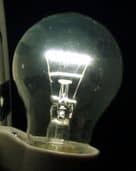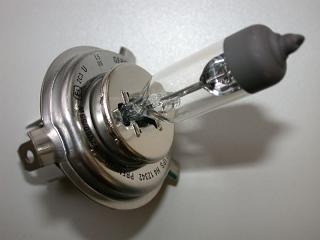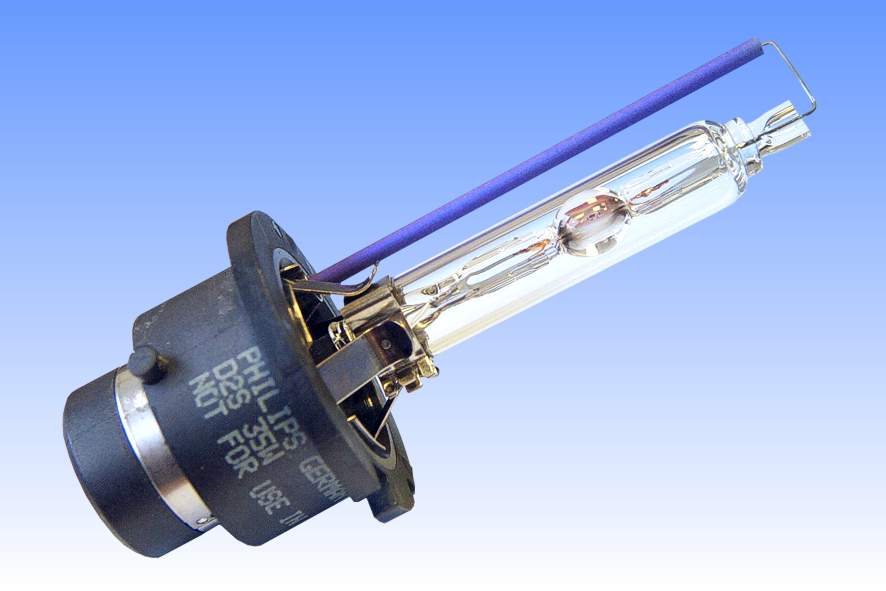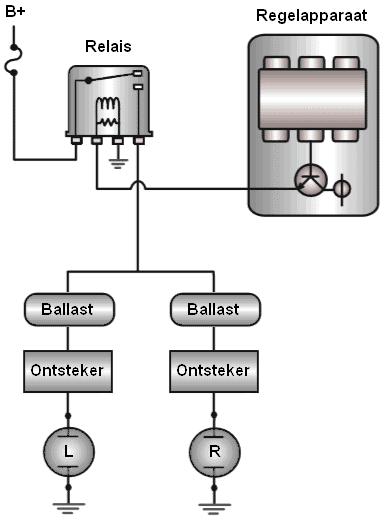Subjects:
- Light bulb
- Halogen lamp
- Xenon lamp
light bulb:
The invention of the light bulb is often credited to Thomas Alva Edison. However, there were other people who contributed to the development of a means of generating light with electricity. In 1801 Humphry Davy already experimented with a glowing platinum wire, which, however, burned immediately. In 1854, Heinrich Göbel succeeded in making the first real light bulb. His light bulb consisted of a charred bamboo fiber in a vacuumed cologne bottle.
He was able to vacuum the bottle by filling it with mercury and then draining it. The vacuum prevented the bamboo fiber from burning. Göbel's lamp burned for 400 hours. Edison applied for a 25-year patent on the same type of lamp. Göbel started a lawsuit here and was proved right in 1893. However, he died in the same year.

An incandescent lamp is a lamp made of glass in which light is produced by means of a filament or filament. When voltage is applied, a current will flow through the filament, making it hot and emitting light. A filament used to consist of carbon, but nowadays it consists of the material tungsten. The glass of a light bulb is quite strong, even if it is thinner than a sheet of paper. This is possible due to the shape in which the glass is blown. The electrical resistance of a tungsten filament in the cold state does not exceed a few tens of ohms and becomes several hundreds to thousands of ohms immediately after the voltage is applied under the influence of the heat generated. This creates a current peak when a bulb is switched on, which is often the cause of the filament burnout if it already contained a thin spot.
The filament does not simply burn out while glowing. This is because the glass bulb containing the filament contains no or very little oxygen, but is filled with argon or another noble gas. In the open air, the filament of an average lamp would burn out after just a few seconds after applying a voltage. In a burning light bulb, the material of the filament evaporates very gradually due to the heating and precipitates on the inside of the glass bulb. This can be recognized by the dark color that older lamps get on the inside of the glass. If there is a dark haze on the inside, it is better to replace the lamp immediately. When replacing one lamp, it is therefore best to also look at the condition of the other lamps.
Halogen lamp:
A halogen lamp gets very hot. The temperature can reach up to 250 degrees. The lamp therefore also has heat-resistant glass. A small amount of halogen (eg iodine, bromine, chlorine or fluorine) is added to the lamp under high pressure, which becomes gaseous due to the heat. The halogen will bond with the vaporized material of the filament in colder areas of the lamp. This gaseous compound decomposes back into halogen and metal when it gets close to the very hot filament. The metal then precipitates back onto the filament, extending its lifespan.
The advantages of this lamp are that it is small and the light is easy to bundle.
More information about the headlight and the light beam can be found on the page headlight.

Xenon Bulb:
A gas discharge lamp has a greater light output than a standard halogen lamp. Gas discharge lighting is called “Xenon lighting”. This lighting technique has been used for some time. Not in the automotive industry, but as lighting for football stadiums. With xenon lighting it is possible to approximate the intensity and color of daylight.
Advantages of xenon:
- Xenon in-car lighting is brighter and more diffused than standard halogen lighting.
- Thanks to the enormous light output of xenon lighting, it is possible to mount the headlamps in a smaller housing. With a smaller surface it is already possible to create the same or a greater light output. This has the advantage for the car manufacturer to optimize the aerodynamics and there is also more freedom in design.
- Consumes 30% less energy.
Disadvantages of xenon: - It dazzles oncoming traffic earlier than with halogen lighting, especially if the headlamp does not have a suitable lens for Xenon lighting.

As noted earlier, the higher light output makes it possible to use a smaller reflector and headlamp. Because the xenon lamps convert the electrical energy into light with a higher efficiency, much less heat is also released than with standard halogen lighting.

The service life of xenon lamps is also longer than that of halogen lamps. The average life of a xenon lamp is generally about 2000 hours. That corresponds to the average lifespan of a car.
The ECE regulation states that vehicles equipped with xenon lighting must also be equipped with a level control. The level control (automatic height control) prevents the dazzling of oncoming traffic. An angular displacement sensor is mounted on the rear axle, which registers the buckling of the vehicle. This recorded data is processed in a control unit, which in turn tilts the headlamp unit up or down.
To prevent the formation of stray light, i.e. light that falls outside the intended light beam, as much as possible, it is necessary that the headlight lenses remain clean. That is why a wash system for the headlight lenses is mandatory in cars with xenon lighting. A pump builds up a water pressure of approximately 3,5 bar, after which 2 arms emerge from the body and spray the headlight lenses clean. After spraying, the arms are pulled back into the bodywork.
More information about the headlight can be found on the page headlight.
Xenon lamps do not have filaments as halogen lamps do. Instead, a discharge tube surrounded by quartz glass is used. The lamp is filled with noble gases and metal halides and is ignited by means of two electrodes between which an arc is created. The arc is created by supplying a short-term ignition pulse of between 20.000 and 30.000 Volts. After that, a constant voltage of about 85 Volts ensures that the lamp continues to burn.
In order to generate and limit these high voltages, a ballast is used: the igniter. The igniter provides the high switch-on voltage. The ballast (drawn separately from the igniter in the picture) is usually mounted with the igniter in one housing. The ballast controls the maximum current through the lamp. If no ballast were used, the lamp would be supplied with too high a current and would break down.

